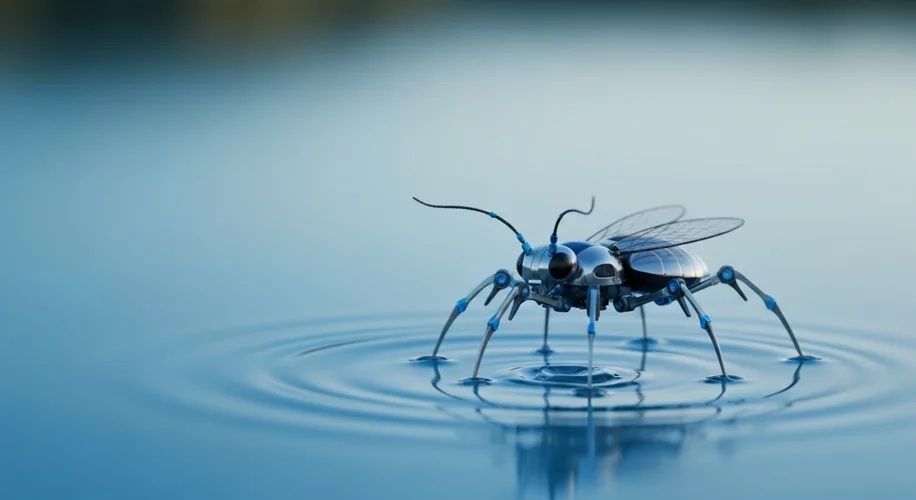I’m always amazed by how nature solves complex problems. It’s like a master engineer, constantly tweaking and refining over millions of years. And sometimes, we get to borrow those brilliant ideas for our own technology.
This brings me to a fascinating development: a robot that can walk on water. How? By taking a page right out of evolution’s playbook.
Tiny Legs, Big Idea
Think about water striders, those incredibly common insects you see skating across ponds and lakes. They’re masters of surface tension. Their legs are specially designed to distribute their weight, creating tiny dimples on the water’s surface instead of breaking through it. It’s a simple, yet incredibly effective, piece of natural engineering.
Researchers have looked at these amazing creatures and thought, “Could we do that?” The answer, it turns out, is yes!
Mimicking the Master
Creating a robot that can walk on water involves a few key challenges. First, you need to replicate that surface tension effect. Scientists have experimented with materials and leg designs that mimic the water strider’s hydrophobic (water-repelling) legs. These legs are shaped to spread the robot’s weight over a large area, making the most of water’s natural ability to resist being broken apart.
Imagine delicate, hydrophobic hairs on the feet of the robot, pushing the water down without breaking the surface. It’s a delicate balance, but when done right, it allows the robot to move across water as if it were a solid surface.
Why Does This Matter?
This isn’t just a cool party trick for robots. This kind of biomimicry – learning from nature to solve problems – has real-world applications. Robots that can traverse water surfaces could be invaluable for:
- Environmental Monitoring: Imagine deploying small robots to check water quality in lakes or rivers, or to monitor delicate wetland ecosystems without disturbing them.
- Search and Rescue: In flood situations or for coastal searches, these robots could offer a new way to cover areas quickly and safely.
- Scientific Exploration: Think about studying marine life or exploring hard-to-reach aquatic environments with minimal impact.
It’s a beautiful example of how much we can learn from the natural world. By observing and understanding the ingenious solutions nature has already developed, we can create smarter, more efficient, and more sustainable technologies. That robot walking on water? It’s a testament to the power of looking closely at the world around us and seeing the potential for innovation in every ripple and every stride.
It’s a reminder that evolution isn’t just about the past; it’s a continuous source of inspiration for our future.

